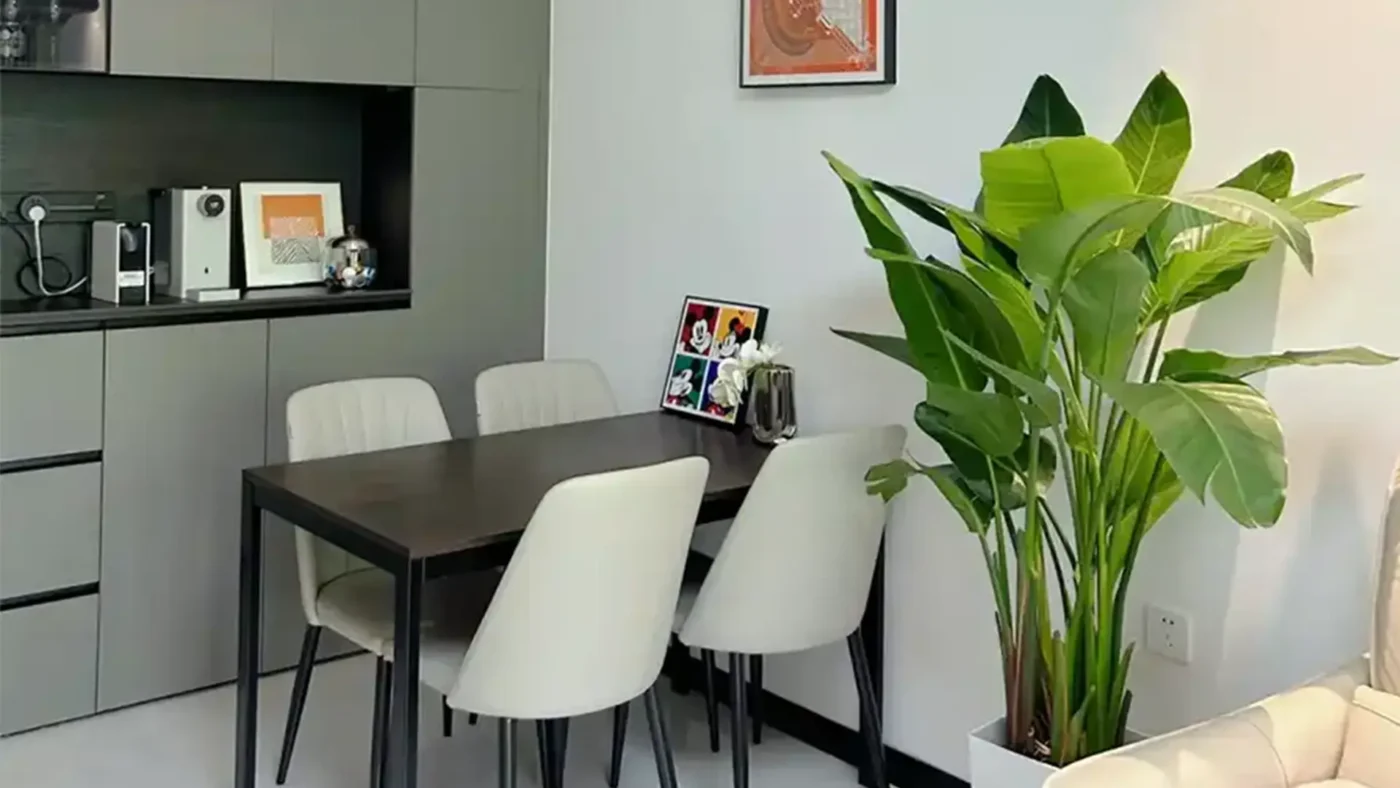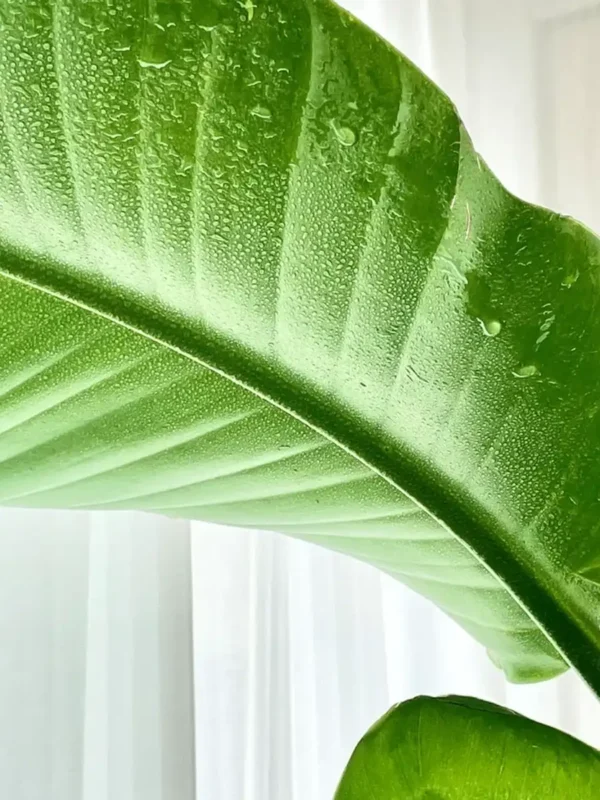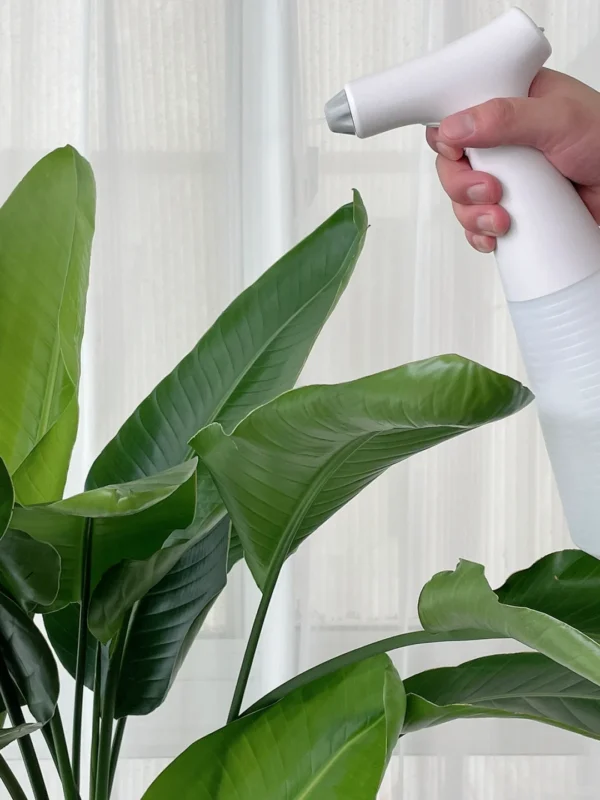Indoor Plants
How to Plant Bird of Paradise: An Easy Guide
Introduction
Bird of Paradise, known scientifically as Strelitzia, is a magnificent plant celebrated for its striking, bird-like flowers and broad, lush leaves. This plant, native to South Africa, brings an exotic touch to gardens and homes, making it a favorite among plant enthusiasts. In Malaysia’s tropical climate, Bird of Paradise thrives with the proper care and attention. This comprehensive guide will provide you with all the necessary information to plant and maintain a healthy Bird of Paradise, ensuring your garden flourishes with these vibrant beauties.

How to Plant Bird of Paradise ?
Planting Bird of Paradise requires attention to detail, especially in selecting the right location and preparing the soil.
Choosing the Right Location
Bird of Paradise thrives in bright, indirect sunlight but can also tolerate some direct sun. When planting outdoors, choose a spot that receives plenty of morning light but is shielded from harsh afternoon sun. For indoor planting, place the plant near a south or west-facing window where it can get ample light.
Soil Preparation
The success of your Bird of Paradise largely depends on the quality of the soil. Use well-draining soil rich in organic matter. A mix of peat, perlite, and sand, or a high-quality potting soil with added compost, is ideal. Ensure that the planting site or container has good drainage to prevent waterlogging, which can lead to root rot.
Light Requirements
Bird of Paradise plants need bright light to thrive.
Ideal Light Conditions
For optimal growth, provide your Bird of Paradise with bright, indirect sunlight. While the plant can endure some direct sunlight, too much can scorch its leaves. Ideally, give it filtered light through a sheer curtain if grown indoors.
Tips for Indoor and Outdoor Placement
Indoors, place the plant near a sunny window, preferably south or west-facing. If grown outdoors, ensure the plant is in a spot where it receives ample morning sun and is shaded during the hottest part of the day. This balance helps in preventing leaf burn while ensuring the plant gets enough light for photosynthesis.

Watering Needs
Proper watering is crucial for the health of Bird of Paradise.
How Often to Water
Water your Bird of Paradise every 1-2 weeks, allowing the top inch of soil to dry out between watering sessions. During the active growing season in spring and summer, you might need to water more frequently. In the cooler months, reduce watering as the plant’s growth slows down.
Signs of Overwatering
Overwatering can cause the leaves to turn yellow and the roots to rot. To avoid this, ensure the soil dries out slightly between waterings and always use a pot with good drainage. If you notice yellow leaves, check the soil moisture and adjust your watering schedule accordingly.
Temperature and Humidity
Bird of Paradise plants prefer warm and humid conditions.
Ideal Temperature Range
These plants thrive in temperatures between 18°C to 30°C. They can survive short periods at temperatures as low as 5°C but should be protected from frost. For indoor plants, maintaining a stable temperature within this range will promote healthy growth.
Managing Humidity Levels
Bird of Paradise enjoys high humidity levels. In drier climates or indoor settings, increase humidity by misting the leaves regularly or using a humidifier. You can also place the plant on a humidity tray to maintain moisture around it.
Soil Preferences
The type of soil you use is critical for the health of your Bird of Paradise.
Best Soil Mix
A well-draining soil mix is essential. Combine peat, perlite, and sand to create a medium that retains moisture but allows excess water to escape. Alternatively, use a high-quality potting soil with added compost to ensure the soil is rich in organic matter.
Importance of Drainage
Good drainage is vital to prevent root rot. Ensure that your planting container or garden bed has adequate drainage holes. If the soil tends to retain water, consider adding more sand or perlite to improve its draining capacity.
Fertilizing Bird of Paradise
Regular fertilization helps in maintaining vibrant and healthy plants.
When and How to Fertilize
Fertilize your Bird of Paradise once a month during the growing season (spring and summer). Use a balanced, water-soluble fertilizer to provide essential nutrients. Avoid fertilizing during the winter months when the plant’s growth slows down.
Types of Fertilizers
A balanced fertilizer with equal parts nitrogen, phosphorus, and potassium works well. Look for a 10-10-10 or 20-20-20 formulation. Organic options like compost tea or fish emulsion can also be beneficial and environmentally friendly.
Common Problems and Solutions
Despite its resilience, Bird of Paradise can face some common issues.
Yellow Leaves
Cause: Overwatering or poor drainage. Fix: Ensure the soil drains well and let it dry out between waterings. Adjust your watering schedule accordingly.
Brown Leaf Tips
Cause: Low humidity or underwatering. Fix: Increase humidity by misting the plant regularly and ensure it gets enough water without the soil becoming soggy.
Pests
Common Pests: Spider mites, scale insects, and aphids. Fix: Use insecticidal soap or neem oil to treat infestations. Regularly check your plant for pests to catch issues early.
Propagating Bird of Paradise
Propagation allows you to multiply your Bird of Paradise plants.
Tips for Success
Use a sharp, clean knife to divide the rhizome. Plant each section in fresh, well-draining soil and water thoroughly. Keep the new plants in a warm, humid environment to encourage root development.
FAQs
Bird of Paradise plants are native to South Africa but are popular in tropical and subtropical regions around the world, including Malaysia.
– Start with a healthy plant from a nursery.
– Plant it in well-draining soil.
– Provide plenty of light.
– Water consistently, but avoid overwatering.
– Fertilize monthly during the growing season.
– Maintain high humidity around the plant.
Yes, Bird of Paradise can be grown indoors as long as it receives adequate light. Place it near a bright window and ensure it gets some direct sunlight each day.
Water every 1-2 weeks, allowing the top inch of soil to dry out between waterings. Adjust the frequency based on the plant’s needs and the season.
Use well-draining soil rich in organic matter. A mix of peat, perlite, and sand, or a good-quality potting soil with compost, is ideal.
Mist the leaves regularly, use a humidity tray, or place a humidifier near the plant. These methods will help maintain the high humidity levels that Bird of Paradise prefers.
Conclusion
Bird of Paradise is a stunning and rewarding plant that can transform your home or garden into a tropical paradise. By following the proper planting and care techniques outlined in this guide, you can enjoy the vibrant blooms and lush foliage of Bird of Paradise year-round. Happy planting!

